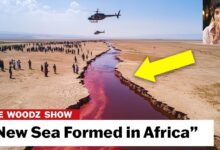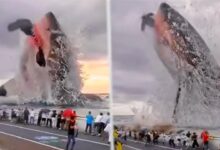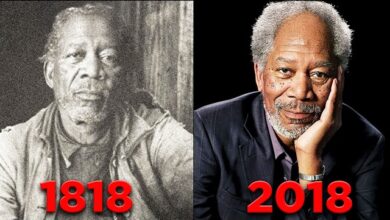What Actually Happened To Amelia Earhart?

Amelia Earhart’s fateful journey on July 2, 1937, was marked by a series of unfortunate events and miscalculations that ultimately led to her disappearance. As she radioed her distress, saying, “We must be on you but cannot see you. Gas is running low,” she found herself surrounded by an endless expanse of ocean. Earhart’s predicament was partly due to a lack of critical understanding of physics and navigation challenges. However, one critical action at the time might have changed her fate and history.
Earhart was attempting to become the first female pilot to circumnavigate the globe, following a route along the Equator—the longest and most challenging path. Her Lockheed Electra was modified for this ambitious flight, stripped of unnecessary weight to increase its fuel capacity, effectively transforming it into a “flying gas can.” Despite these modifications, the Pacific crossing from Lae, New Guinea, to Howland Island was fraught with peril, as her plane’s maximum range barely covered the distance.
Howland Island, a tiny landmass in the Pacific, was chosen as a refueling stop. Its significance was underscored by the U.S. government’s efforts to construct a runway for Earhart’s historic attempt. Accompanying her was navigator Fred Noonan, who relied on dead reckoning and celestial navigation to guide them. However, this method had inherent risks, as small errors could lead to massive deviations over long distances.

Radio technology, still in its infancy, played a crucial role in Earhart’s navigation plan. Her plane was equipped with multiple antennas for communication and navigation. Unfortunately, technical issues hindered her ability to receive vital updates about strong headwinds during the flight. These winds delayed her progress, further complicating her navigation to the remote island.
The Itasca, a U.S. Coast Guard ship stationed near Howland, was prepared to assist with radio signals and visual smoke signals. However, communication difficulties persisted. Earhart’s inability to use her plane’s direction-finding loop antenna effectively, compounded by a missed opportunity for the Ontario ship to transmit Morse code signals, left her without critical navigation aids.
Earlier in her journey, Earhart had already faced numerous delays and mishaps, including a failed westward attempt to circumnavigate the globe. Mechanical issues, seasonal wind shifts, and a damaged plane forced her to restart the journey months later, this time heading eastward. Despite her fame and determination, these challenges ultimately proved insurmountable.

Amelia Earhart’s disappearance remains one of history’s great mysteries, underscoring the interplay of human ambition, technological limitations, and the unforgiving nature of exploration.
Amelia Earhart’s tragic story highlights the critical interplay of knowledge and responsibility in overcoming challenges. As she approached Howland Island, Earhart relied on the Itasca for radio communication and navigation assistance. The ship transmitted the letter “A” in Morse code every half hour and promised to operate across various frequencies. At 6:15 a.m., Earhart’s voice came through, requesting a bearing on her signal at 3105 kHz, but confusion ensued as her equipment wasn’t compatible with the lower frequencies necessary for accurate direction finding. The ionosphere caused her high-frequency signals to scatter, preventing effective navigation.
Earhart’s loop antenna could have taken a bearing on the Itasca if the ship had used a suitable low frequency. However, misunderstandings regarding frequencies and time zones compounded the situation. Earhart operated on Greenwich Civil Time (GCT), the Itasca on GCT -11.5 hours, and Howland Island on Hawaii Time (GCT -10.5 hours). Miscommunication about scheduled transmissions and frequency usage further hampered coordination.
Complicating matters, Earhart had removed her long trailing antenna, rendering her unable to transmit in low frequencies. Although she requested feedback on the chosen frequencies, the Itasca failed to correct her error, assuming she was better informed about her equipment. This misjudgment proved costly when Earhart’s final transmissions revealed her desperation, stating her position and dwindling fuel reserves. Despite the Itasca and other search efforts, no trace of Earhart, her navigator Fred Noonan, or her Electra was ever found.
Earhart’s fate underscores the importance of expertise and accountability. While she lacked technical radio knowledge, the Itasca’s Commander Thompson, despite possessing this knowledge, refrained from intervening decisively. This oversight, coupled with technical challenges, led to a preventable tragedy. Ultimately, the story serves as a cautionary tale of how chaos can prevail without the right knowledge and someone willing to take responsibility.








